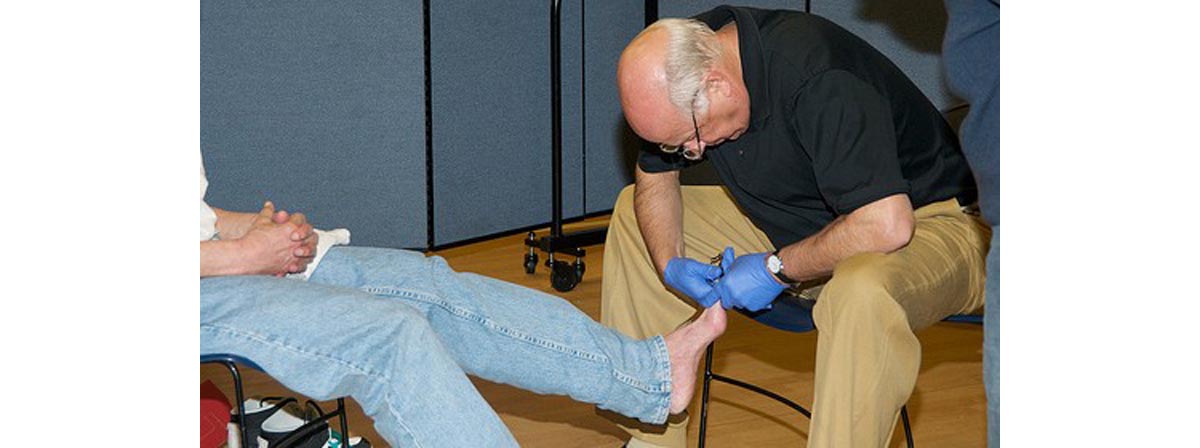Table of Contents
Generally the problems all start with a wound to the foot. This injury may have been caused by an accident such as the example of a man who fell asleep with his feet on a radiator. Because of numbness he couldn't feel the heat of the radiator, and poor tissue quality led to a burned big toe. The resultant wound would not heal because insufficient blood reached the toe. The increased demand of the damaged toe for blood made it ischemic and the tissues of his big toe died.

There are two options in these circumstances. One is to amputate the toe, as having a long-standing wound is a burden to the person’s overall health, and the toe will never heal once it has become gangrenous. But with limited blood supply to the area, there is a danger that the new wound – caused by the surgery – won’t heal either.
The other option is to let nature take its course.
The advantage of this is that the tissues are ‘sealed’ off as the toe slowly comes away, so that there is no wound left to heal.
Corns and callus can be the culprits
When our feet are rubbed by poorly fitting shoes they produce hard skin known as calluses or corns over the area, to protect the foot. In a non-diabetic person the worst that can happen is that the corns are painful and need to be removed (cut away) by a podiatrist. But often when people with diabetes have their corns cut away, a deep wound or ulcer is revealed below the corn. This is because the pressure has been so great that the underlying tissues dissolve. This might sound extreme but loss of feeling means people are unaware of the damage and the tissues are particularly fragile.
This is particularly serious as such deep ulcers often become infected, and the bacteria can easily spread to infect the bone (called osteomyelitis).
One thing can lead to another
As mentioned, the lack of blood supply and impaired immune system may prevent a wound, such as an ulcer, from healing. The wound may increase in size or may cause death of the tissue. Either of these events may bring about the need for amputation of part of the foot – in an attempt to get back to healthy tissue.
Often the first amputation is done to only remove a part of the foot, then below the knee, then sometimes the whole leg.
This is the reason that people who have had amputations as a result of diabetes have reduced life expectancy.
Prevention is best
The people who experience the worst complications are those whose diabetes is poorly controlled. This means not managing to maintain blood sugar levels within the recommended range. So good lifestyle management – good diet and exercise – coupled with adherence to medication, will help to prevent serious foot problems.
Also, following commonly available foot-care advice and regularly seeing a podiatrist will help to keep feet in good condition, and allow for early treatment of any problems before they become serious.
- www.itb-thioctacid.ru/files/pdf/1996_boyko.pdf
- Edmonds ME and Foster AVM. Managing the Diabetic Foot. Published by Blackwell Sciences Ltd, Oxford, UK
- Neale’s Disorders of the Foot. 8th Edition. Published by Churchill Livingstone, Edinburgh, UK
- Photo courtesy of Pflegewiki-User ApoPfleger by Wikimedia Commons : commons.wikimedia.org/wiki/File:Offene_Wunde_bei_einem_diabetischen_Fu%C3%9Fsyndrom.jpg
- Photo courtesy of Christiana Care by Flickr : www.flickr.com/photos/christianacare/6466239237/
- www.diabetes.co.uk/diabetes-prevalence.html

